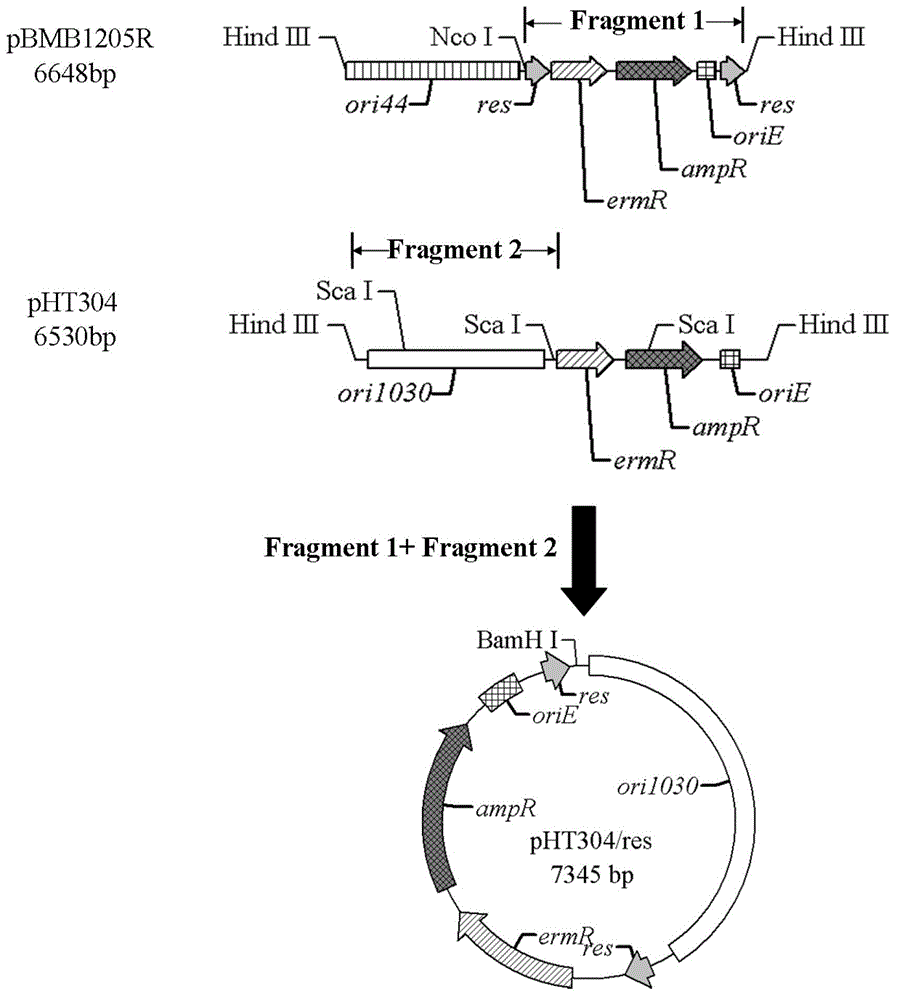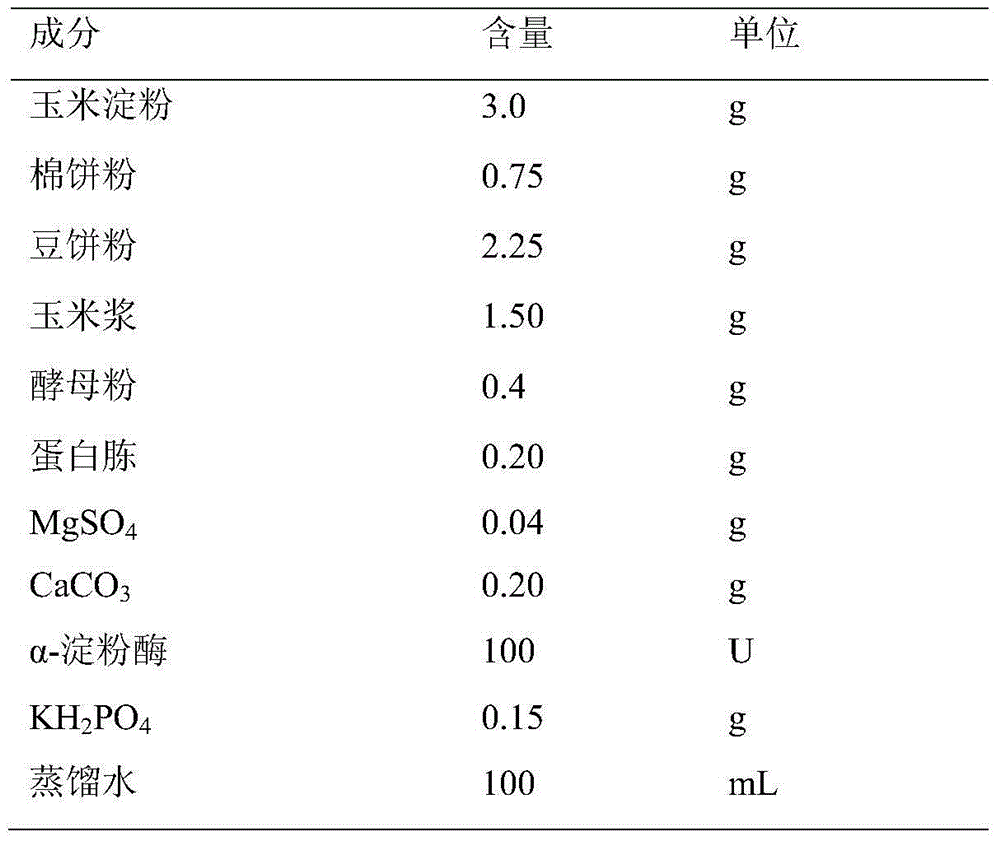Bacillus thuringiensis engineering bacteria for killing coleopteran pests, preparation method and application thereof
The technology of Bacillus aureus and thuringiensis spore is applied to Bacillus thuringiensis engineering bacteria for killing coleopteran pests. Low toxicity, poor insecticidal specificity, etc., to achieve the effects of unique insecticidal characteristics, high protein yield, and high virulence
- Summary
- Abstract
- Description
- Claims
- Application Information
AI Technical Summary
Problems solved by technology
Method used
Image
Examples
Embodiment 1
[0037] A preparation method of bacillus thuringiensis engineering bacteria, the steps are:
[0038] 1. Construction of the dissociation vector: The replication region ori1030 of the Bt-E.coil shuttle vector pHT304 was replaced with the replication region ori44 of the vector pBMB1205R to construct the dissociation vector pHT304 / res. The specific operation is: after pHT304 is digested and recovered by Hind III, it is incompletely digested with Sca I and the 3657bp fragment is recovered. At the same time, pBMB1205R was digested with Nco I, and the sticky ends were blunted with Klenow enzyme and recovered, and then the 3688bp fragment was recovered by Hind III digestion. The 3657bp fragment was connected with the 3688bp fragment to obtain the novel dissociation vector pHT304 / res, with a size of 7345bp (see figure 1 ).
[0039] 2. Using cry3A-F (5'GGA TCC TTT GAA AAT ATA ACT ACC3') and cry3A-R (5'GGA TCC AAG CTT ACA GAG AAA TAC) as primers, using PCR technology (polymerase chain ...
Embodiment 2
[0046] A kind of application of Bacillus thuringiensis engineered bacterium in the preparation of Bt insecticide, its steps are:
[0047] A. Shake flask fermentation:
[0048] The purpose of shake flask fermentation is to select the best fermentation formula, optimize the fermentation conditions, and conduct orthogonal experiments with different solid contents and different C / N ratios. Scraped cultures from plates cultured for more than 3 days were dissolved in sterile water to make spore suspension, treated at 80°C for 30 minutes for inoculation. 20 / 250ml filling volume, 30°C, 200 rpm shake flask culture for 72 hours, the optimal fermentation medium formula for strain Ace-38 is shown in Table 1.
[0049] B. Using the best fermentation medium formula screened out, put 20 ml of medium in a 250 ml Erlenmeyer flask for fermentation. The pH of the medium before elimination is 8.1, and the pH after elimination is 7.0. Inoculate the slope treated at 80°C for 30 minutes Strains, 30...
PUM
 Login to View More
Login to View More Abstract
Description
Claims
Application Information
 Login to View More
Login to View More - Generate Ideas
- Intellectual Property
- Life Sciences
- Materials
- Tech Scout
- Unparalleled Data Quality
- Higher Quality Content
- 60% Fewer Hallucinations
Browse by: Latest US Patents, China's latest patents, Technical Efficacy Thesaurus, Application Domain, Technology Topic, Popular Technical Reports.
© 2025 PatSnap. All rights reserved.Legal|Privacy policy|Modern Slavery Act Transparency Statement|Sitemap|About US| Contact US: help@patsnap.com



